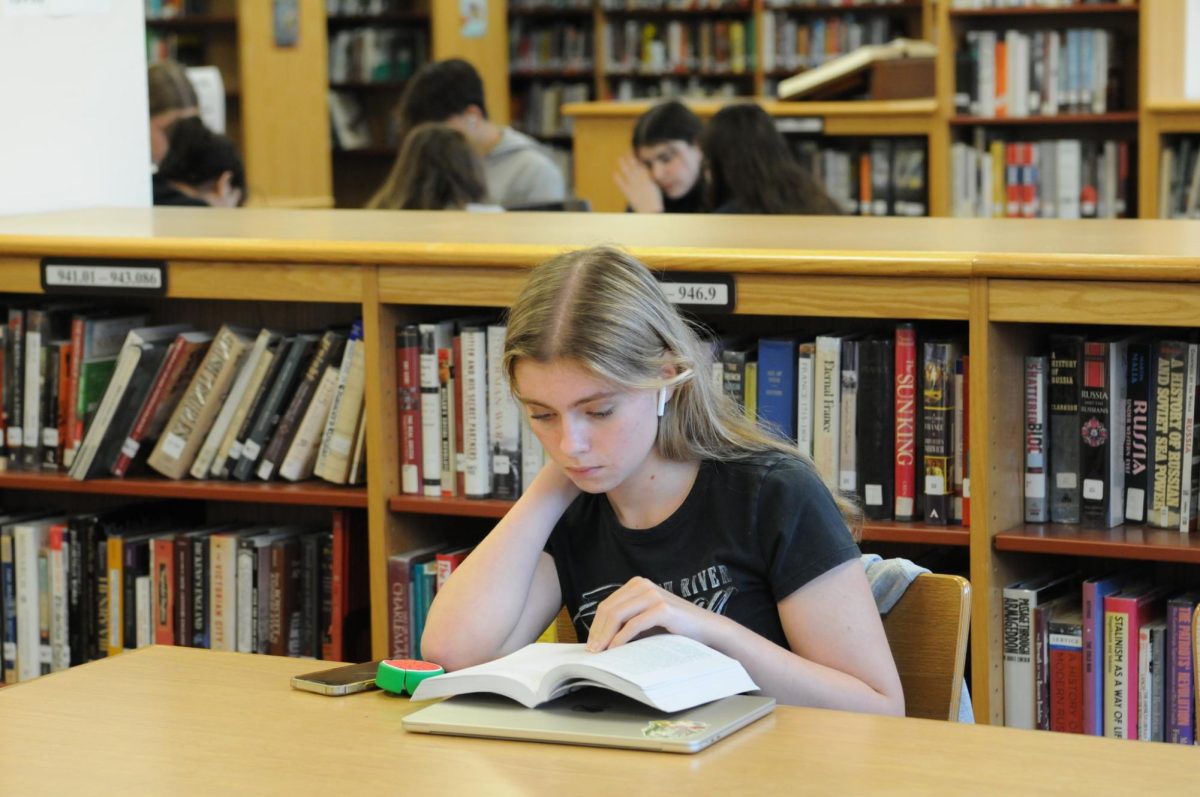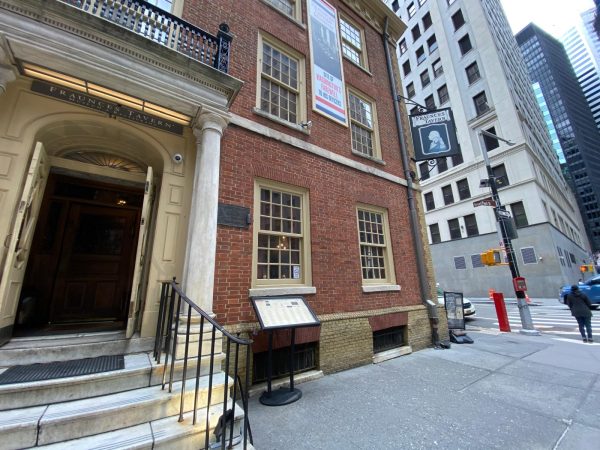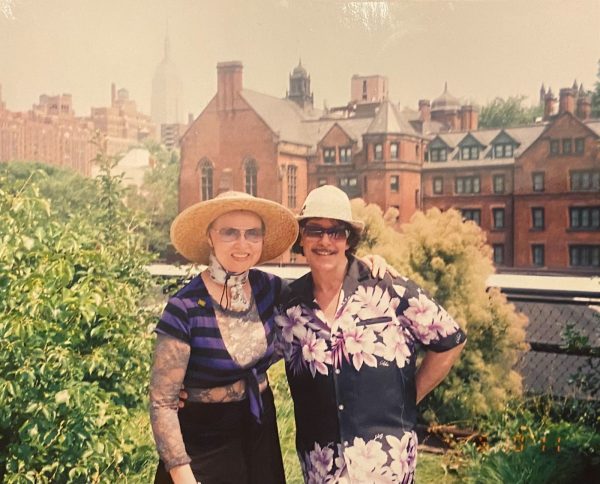A Closer Read of the Bronx Science Library
An exploration of our librarians’ reading habits and why you should reread your books, the importance of public libraries, and how the pandemic has changed library culture.
Bronx Science students find the school’s library to be a quiet respite from the hectic nature of the school day.
When I first came to Bronx Science, I developed an affinity for the school’s library almost immediately. Sometimes, I skipped my lunch period in order to sit in one of the coveted cushiony chairs and read through Wuthering Heights, City of Bones, and The Bluest Eye, and after I did, I wouldn’t feel so hungry anymore. With any bit of free time that I had, I would stroll through the library and browse the shelves with informative social science texts, memorable biographies, and Ms. Kim’s personal favorite, contemporary fiction that incites deep thinking in today’s fast-paced, digitalized age.
I’m sad that I have not interacted with all of the 18,000 books in the library. Ms. Kim and Ms. Sweis, the Bronx Science librarians, have meticulously assembled the collection, but knowing that there’s much unexplored keeps me coming back, like a bee searching for nectar.
As the librarians, Ms. Kim and Ms. Sweis do nearly everything: recommending a good book, developing the collection and ordering new books, shelving returned books into their correct location, assisting students when they have trouble printing a paper for their history class, working on the library webpage, creating the summer reading website, managing the online system of cataloging books, forgiving students who enter without their ID, and holding readers’ advisory and ninth grader orientation classes.
“The number one thing is that we are here to help the students. Being on the floor and available is the first job, and it is what I like doing the best, just helping students one-on-one. I feel that they are relieved when they get the help that they need, and it feels good,” said Ms. Kim.
The library is named after Dr. Alexander Taffel, the second principal of Bronx Science, and it is just as historical as the school itself — since the 1950s, the book collection has been gradually expanding. To transport the library books from the old building on Creston Avenue and 184th street to the current Bronx Science building, when the school moved in 1959, on a designated Friday, students took five books home, and on the following Monday, they returned them to the new library.
Alumni who graduated in the ’60s and ’70s and are now professional writers have their books proudly displayed on the front bookshelf. There’s a whole section dedicated to Neil deGrasse Tyson ’76, who sent leather-bound, signed copies of Space Chronicles and Death by Black Hole (not part of the collection) to the library.
When Ms. Kim became a librarian at Bronx Science, the current library had been recently renovated. Before the old library in the current building was renovated, the section or part of the library that housed the computer room (a separate room) was crowded and hot. The back of the newly-built library was the former Holocaust museum, where there were some artifacts, display cases and posters. Then in 2013, Bronx Science received $1 million in funding for the new Holocaust museum located in the basement, and everything was moved out. The back of the library then became an extended-time testing room and an instruction room, which caused scheduling conflicts, so the extended testing room was moved downstairs.
“We found it difficult to schedule library instruction because students were testing in there and we both needed the room at the same time,” said Ms. Kim.
The library has seen its fair share of stories. “Years ago, someone played a prank where they let crickets loose in the library. They all congregated at the front of the library, right by the bookshelves. I had a student who volunteered to carefully (humanely) pick them up and put them outside the window,” said Ms. Sweis.
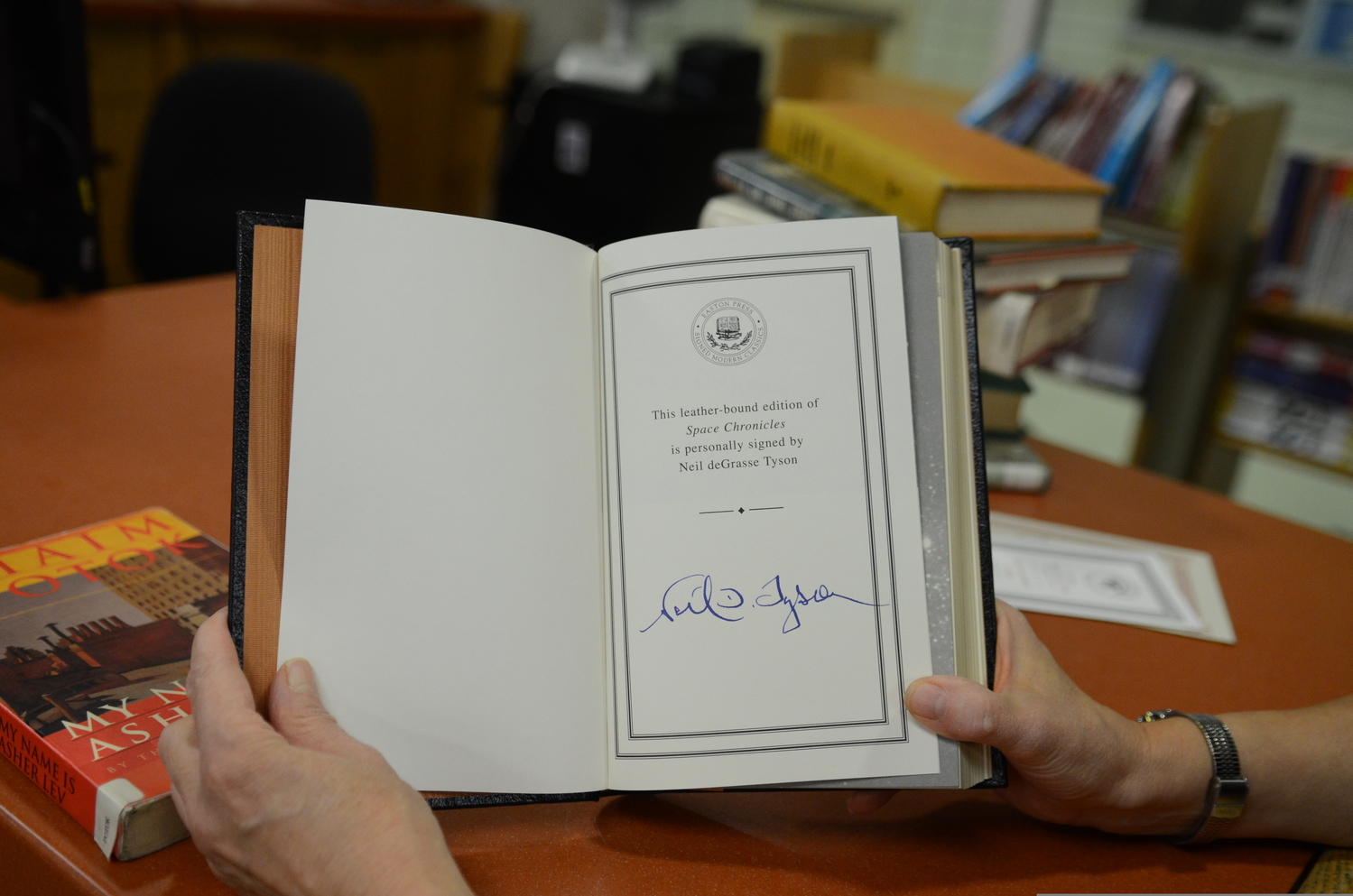
A signed copy of Space Chronicles by Neil deGrasse Tyson ’76. Tyson gave this copy 3-4 years ago when he visited Bronx Science to give a talk. The book cannot be checked out (it is a rare book), but if a student wanted to read it, they could ask to borrow it during their period at the library and return it when the period is over.
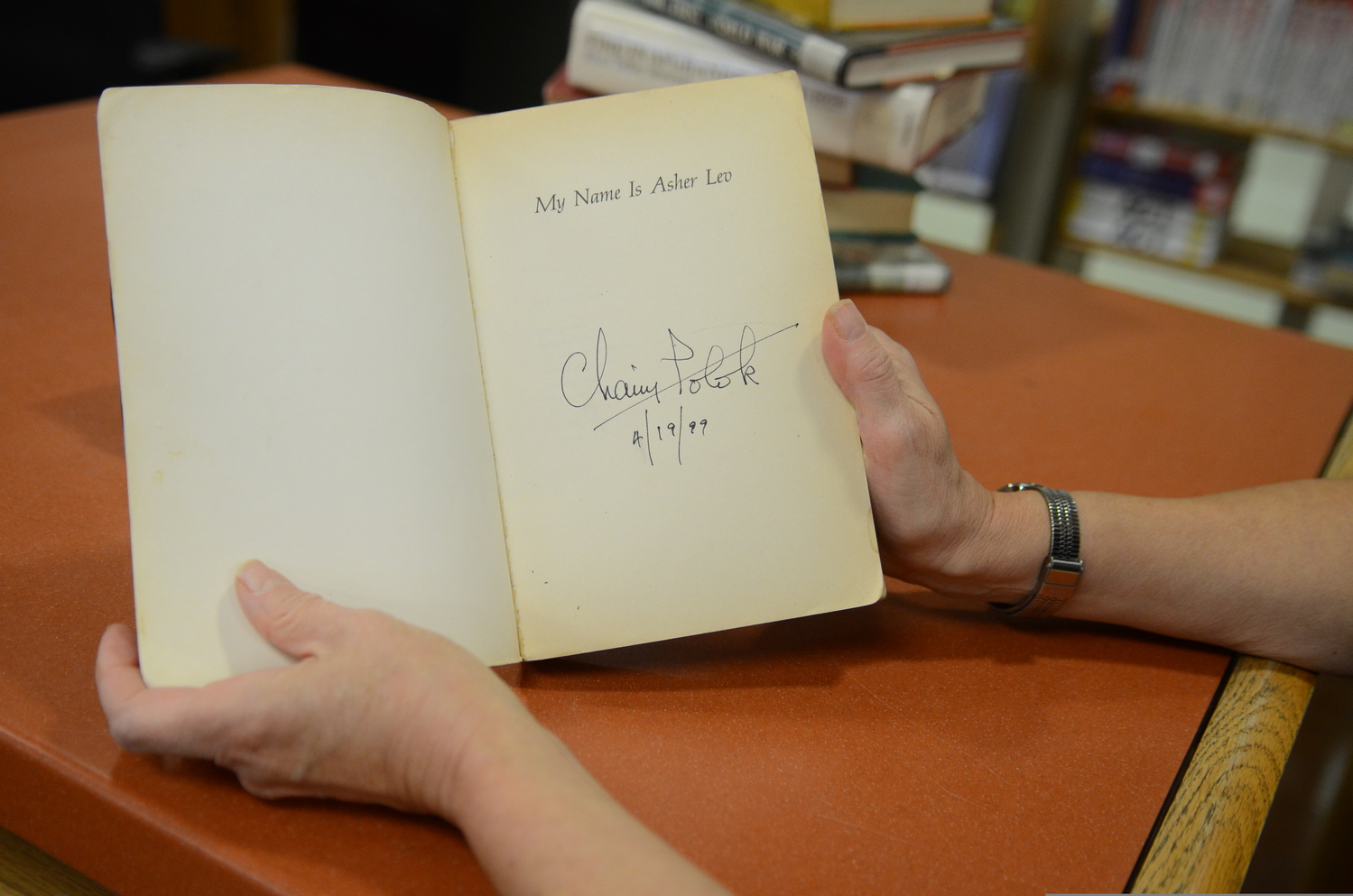
A signed copy of My Name is Asher Lev by bestselling author Chaim Potok. “It’s just a paperback. Nobody ever reads it, and it’s kind of old, but it’s signed by the author, so I don’t throw it out,” said Ms. Kim.
The 2021-2022 current academic year is Ms. Kim’s eleventh year as a librarian at Bronx Science, and she has worked nineteen years as a school librarian in total. This is Ms. Sweis’ ninth year at Bronx Science. Ms. Sweis has a graphic design background, and taught English as a foreign language in Eastern Europe before going back to school to get her certification as a librarian, and worked at a public library before coming to Bronx Science.
“I could have become a children’s librarian for example, but I didn’t, because I would rather work with this high school age group. Because you’re all on the cusp of adulthood, and I find that to be an interesting stage in life,” said Ms. Kim.
Ms. Kim was always a reader, but throughout her early life, her passion fluctuated. When she was my age, she didn’t like reading much. She majored in English in college, but admitted that she didn’t always do the readings for class. It took her until she was 22 or 23 to become an avid reader.
* * *
“If I could describe the atmosphere of the library in three words,” said Ms. Sweis, “it would be social, chaotic, and vibrant.”
I laughed. “Why chaotic?” I said.
“Because at times, during the busier periods, there’s a lot of students looking for seats and we can’t accommodate everyone.” At the beginning and end of the day, the library experiences rush hour. The scramble to grab a seat before it’s gone is pronounced with the limited seating in the library currently needed in order to adhere to social distancing guidelines.
Some older books need to be removed from the collection in order to make space for the newer books; there is not enough room to house them all. But many old history books with beautiful art and illustrations are preserved. A couple years ago, Ms. Kim and Ms. Sweis took every book from the history section off the shelves, examined each one, and determined whether to keep it based on impartiality and accuracy. “To our surprise, a lot of the older history books are really good. They include information you never knew about that the newer books don’t seem to have. I guess that’s because they were written at the time the events were happening; they’re very thorough and great, and I get kind of sad when I see that students don’t pick these books up,” said Ms. Kim. Even when these books fall into disarray, the librarians refuse to throw them away. Instead, they attempt to salvage the books by gluing the pages back to the spine and adding layers of tape around the binding.
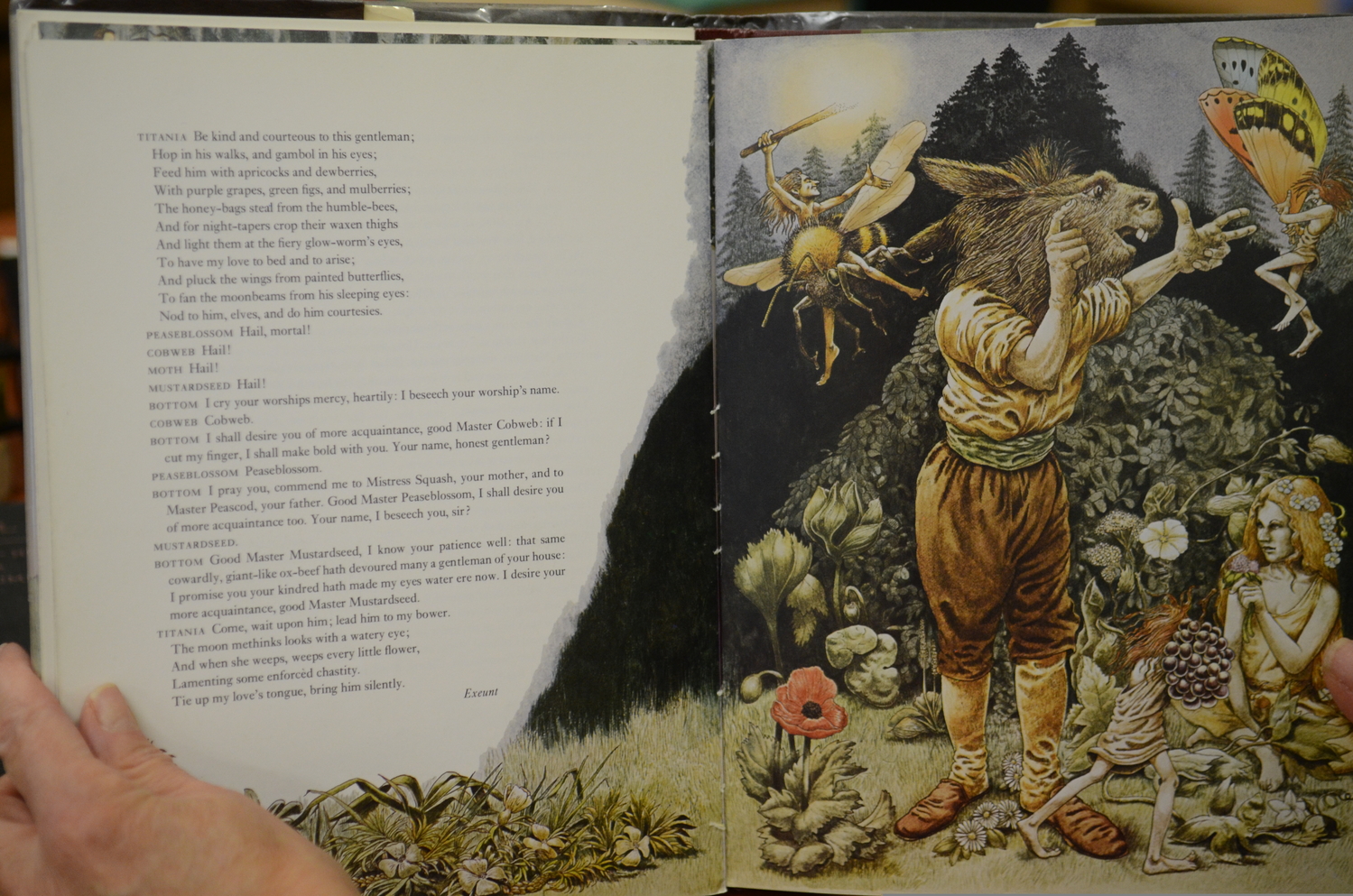
Ms. Kim displays an illustrated version of Shakespeare’s A Midsummer Night’s Dream.
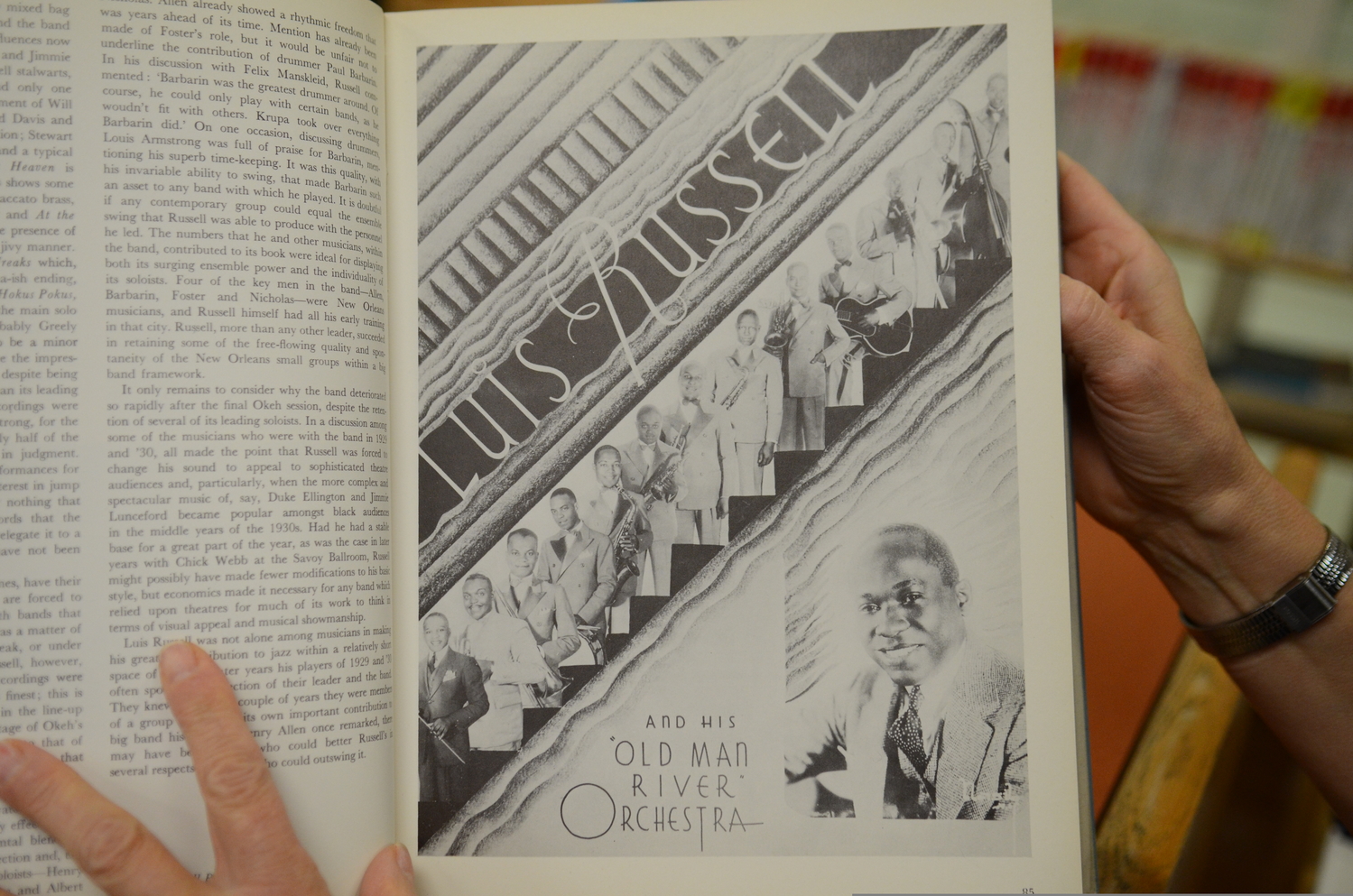
Here is a flyer for a Luis Russell performance, from the first-edition version of Big Band Jazz. Luis Russell was a Panamanian jazz pianist, who was based in New York City.
* * *
“When I read a really, really good book, I close it, give it a little affectionate rub, and then I proceed to open it up and begin it again,” Ms. Kim writes in her review of The Sympathizer on Goodreads. “I’ve got to read it again right away. Really good books are complicated, and the author gives us clues that we don’t get the first time in, because we don’t know what’s going to happen. So the second time in, we know — hey! that’s foreshadowing — look how cool that is! Or we pay more attention to that minor character, because this time, we know that they are going to be important to the plot later on. Or we notice connections, symbols, and motifs better — because now we are on familiar ground and not in some unknown territory. Does anyone expect to get much out of a book once read?”
Ms. Kim advocates for rereading books similar to how an animal rights activist advocates for wearing faux fur. She finished rereading The Sympathizer last week, and finds that the knowledge and ideas she gets out of reading a book again is worth the second read, which can feel like a first read, given how much new information she obtains. Ms. Kim juggles reading two, three, even four books simultaneously.
Dense books are a physical manifestation of delayed gratification — they’re tough to read, but once you do, you know a slew of exquisite vocabulary words, you encounter unforgettable characters, you approach the author’s wisdom and wit and wish you could think like that, or you unexpectedly stumble upon a wow factor at the ending. But the best thing is that their utility does not depreciate.
“English teachers know this; they often teach and reread the same books in consecutive years. I’ll bet you that every time they read it again, they get something new out of it. I never understood why some people are against rereading books. I think it’s what readers do,” said Ms. Kim.
On Goodreads, Ms. Kim has an active and authentic presence. Her reviews are eager, like the one above. They’re quick-witted, sometimes cutting. Her one-star review on The Interestings: “The Interestings aren’t.”
“Who cares? I just wanted to close the book and never think about it again,” Ms. Kim writes at the end of her one-star review of A Children’s Bible. Other times, they are profound: “You can browse the shelves of Barnes and Noble, but they won’t have the older books, unless they are widely popular — bookstores can only offer what’s new and what’s selling. Your choices are limited by the aims of commerce,” she writes in her review of The Library Book, which she gave 5 stars.
Popular, trending fiction is the fast fashion of books — after it becomes a bestseller, its popularity fades, blending with the clutter of previously released books. With over a million books published every year, there’s an oversaturation of the same tropes. Some of the new books released are recycled ideas with new covers, a quick cash-grab instead of a nicely-crafted story. The old books hold a charm that some new books lack, and the intimidating selection makes it hard to choose what to read, or when to stop reading.
My perfectionism renders me too generous with my patience for bad books. There’s something unsettling about leaving any book unfinished. What if there are redeeming qualities at the end? It’s as if you’re leaving the story hanging on a cliff. Ms. Kim and Ms. Sweis’ patience for bad books has disappeared. For Ms. Sweis, it makes a slight comeback if the book is so bad that it warrants a complete read, just to see what happens at the end.
In the middle of our interview, Ms. Sweis scrolls through her Goodreads page. “This to-read list is getting ridiculous!”
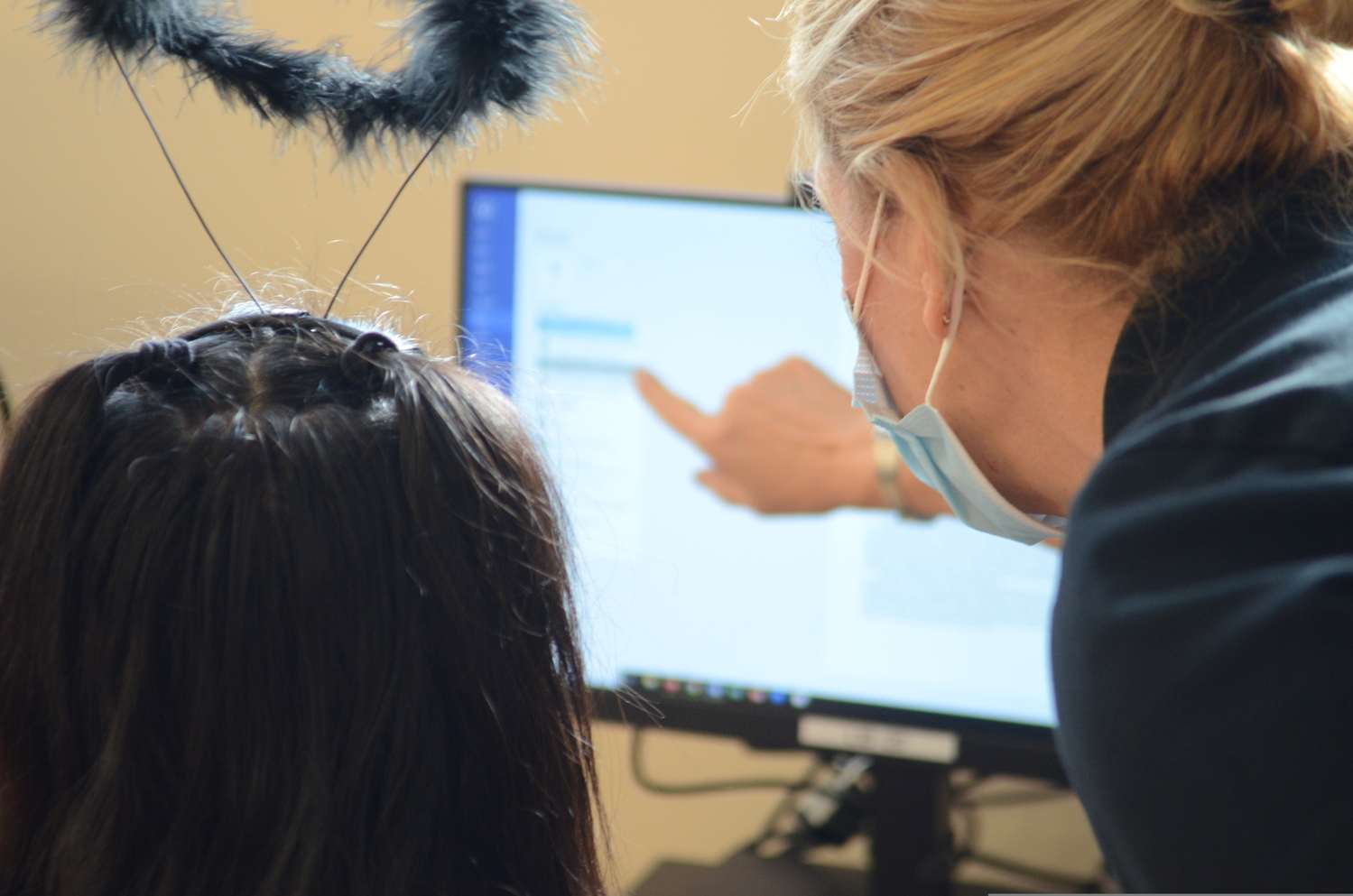
Ms. Kim helps a student print out a paper for history class.
* * *
A book’s complexity is directly proportional to the amount of Post-it notes between the pages once you’re finished. Ms. Sweis adopted the practice with Team of Rivals: The Political Genius of Abraham Lincoln and Reaganland — that book in particular had “Post-its all over it.” Since it is time-intensive, Ms. Sweis saves it for books that truly capture her interest, or on dense books that benefit from Ms. Kim’s strongly suggested rereading.
“As I read each chapter, I added Post-it notes because I didn’t want to forget important quotes, speeches and passages that were so carefully chosen by the author. The author meticulously illustrates a portrayal of Abraham Lincoln, and members of his cabinet from a political and personal perspective,” Ms. Sweis writes in her review on Team of Rivals.
Ms. Sweis’ tastes range from a graphic novel memoir about a Korean teenager growing up in the Midwest (Almost American Girl) to a novel where World War 2 soldiers have cannibalistic encounters and risk their lives serving a Russian general (City of Thieves). They are all coming-of-age stories.
“I gave [Almost American Girl] 5 stars because I thought the illustrations were great and the coming-of-age story was so relatable to a lot of students, even myself,” said Ms. Sweis. “There’s so many coming-of-age books. I mean, a lot of the young adult books revolve around that theme, you can’t help but pick up one.”
Ms. Kim is a picky reader. “I guess I go by what’s being touted as the next greatest thing. I don’t have time to read everything, and I don’t want to waste my time reading bad books. Sometimes the book gets very highly reviewed or recommended, and I don’t like it. I recently read The Matrix by Lauren Groff, and it was very highly reviewed and recommended, but I didn’t like it at all.”
“Why didn’t you like it?” I asked.
“It was set in Medieval England, and that’s not a reason to not like it, but it was about this abbess and a priory and all these nuns living together. I was like, ugh, I’m not feeling that, too many nuns.”
* * *
Budget cuts have turned some public libraries from places with free abundant resources to places with dwindling staff. Ms. Kim used to frequent her local library on 10th Avenue and 53rd Street in Hell’s Kitchen, and over the years the library has gotten rid of essential programs and members. “They used to have a full reference desk, and reference librarians there to answer your questions, and they also had a children’s room with storytime.” Then, “they got rid of reference librarians, they had one trained librarian and for some reason she never came out of the office, so on the floor they had clerks, and they got rid of storytime. And this was a neighborhood that really needed it, and that struck me. I was shocked when that happened. In a high-needs area, they did that. I stopped going to that library, I haven’t been there in about four years.”
In the second part of Ms. Kim’s review of The Library Book, she writes, “Libraries are a place to think and discover. Perhaps that is why the municipalities are closing them down and firing librarians — because they want to take your power to think and discover on our own away from you.”
Looking back on the review, she chuckled. “I must have been in a mood that day.”
Ms. Kim’s mood is justified. In underfunded communities, libraries are the lifeblood for creativity, critical thinking, and exploration. The presence of a library determines whether a community is literate and highly educated, and libraries may be the only place where a person can access free educational resources. It’s about the people inside libraries, too — without librarians, there would be lost people wandering the shelves, inefficient categorization of books, people frustrated at their computers, and less opportunities to engage with important ideas and a community who values them.
* * *
Bronx Science students are as diverse as their reading habits: some students only check out books for an English or history project, quoting a few lines to put in their Works Cited page and not reading the rest. Other students are avid readers, checking out four to five books at a time, promptly returning the books the following week for a new rotation of novels (I used to be one of those students, before the workload of senior year slowed my rotation cycle to once every three to four weeks.) Others have an affinity for fantasy books, allowing their minds to wander in dystopian worlds and magic, a welcome diversion from the intensity of chemistry, physics, and math.
While reflecting on how the pandemic has changed the library, Ms. Kim looks around at the students. “In the past, more people came here for the wifi, and a lot of students were playing games on their phones or on the computers, and they’re still doing that, but I also see (and maybe it is because they were out of school for so long, so they appreciate school more now) more students actually doing their work. I hope that is a trend that continues because I like seeing that. Instead of the library being a place to hang out, I see them helping each other with their work. That is what a library is for. It’s not supposed to be a free-for-all party; that’s not a library.”
I would give the library a 5 out of 5 stars (would highly recommend!) You technically can’t reread the library, but it requires a revisit. Daily.
“Libraries are a place to think and discover. Perhaps that is why the municipalities are closing them down and firing librarians — because they want to take your power to think and discover on our own away from you.”
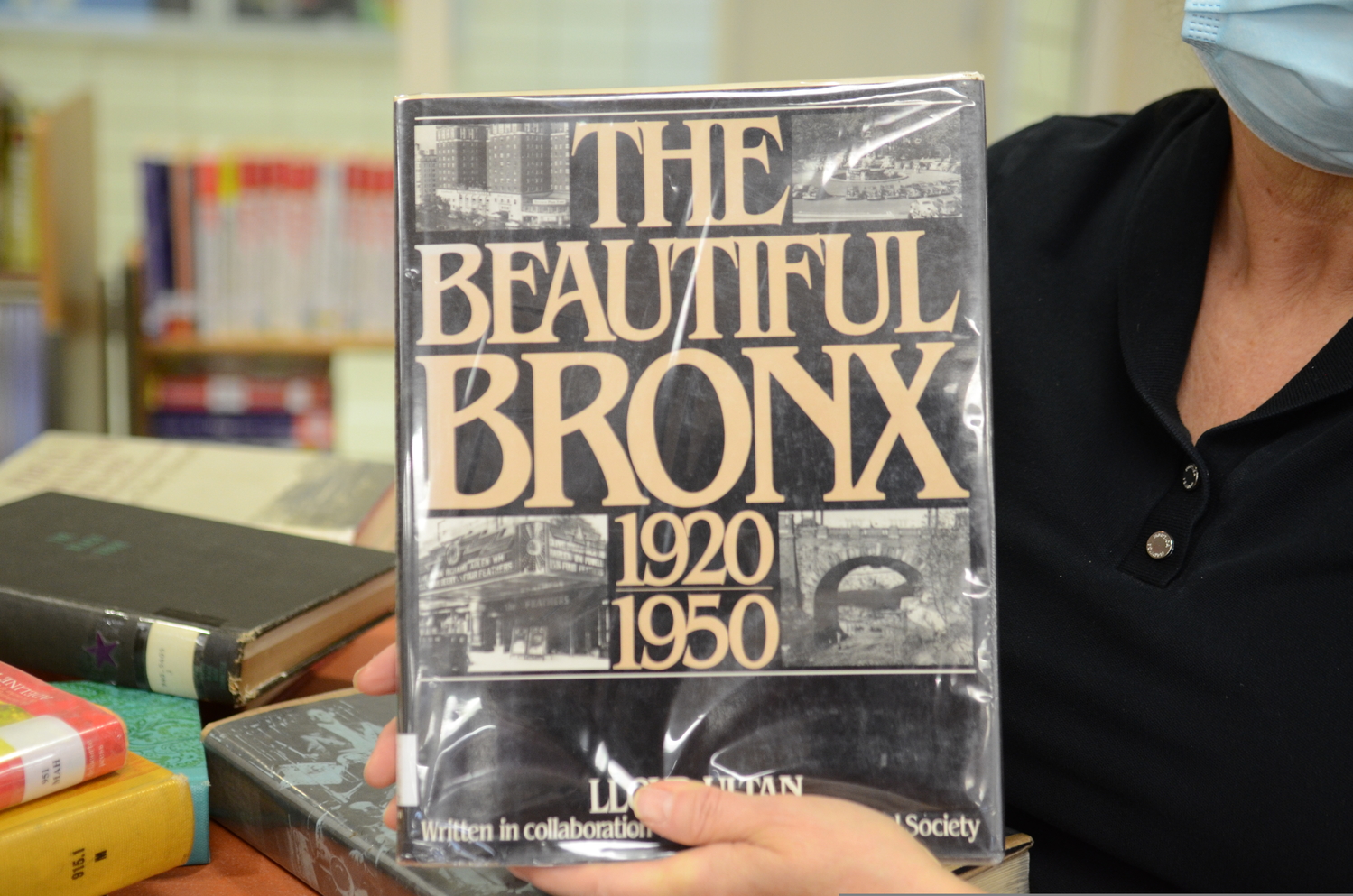
Ms. Kim holds The Beautiful Bronx, a photo collection of historical landmarks of the Bronx from the 1920s-1950s. “It’s essential reading for any student interested in the Bronx,” said Ms. Kim.

A former Bronx Science student wrote a letter to the library along with the return of a math textbook that he stole nearly 50 years ago.
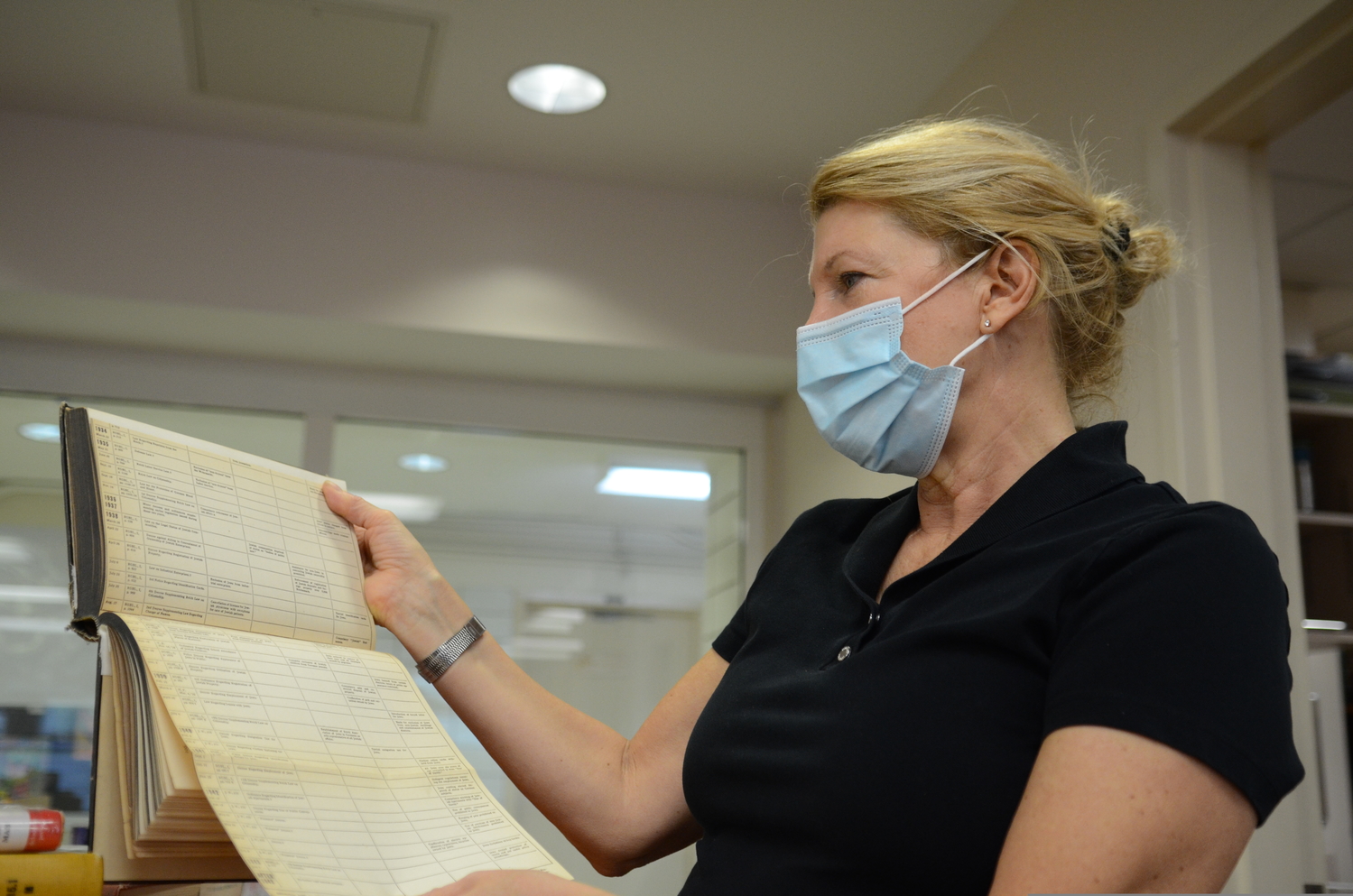
Ms. Kim looks at the inside cover of The Black Book: the Nazi Crime Against the Jewish People, published in 1946, The foldout is a historic document entitled ‘Table of Anti-Jewish Legislation in Germany 1933 – 1943.’
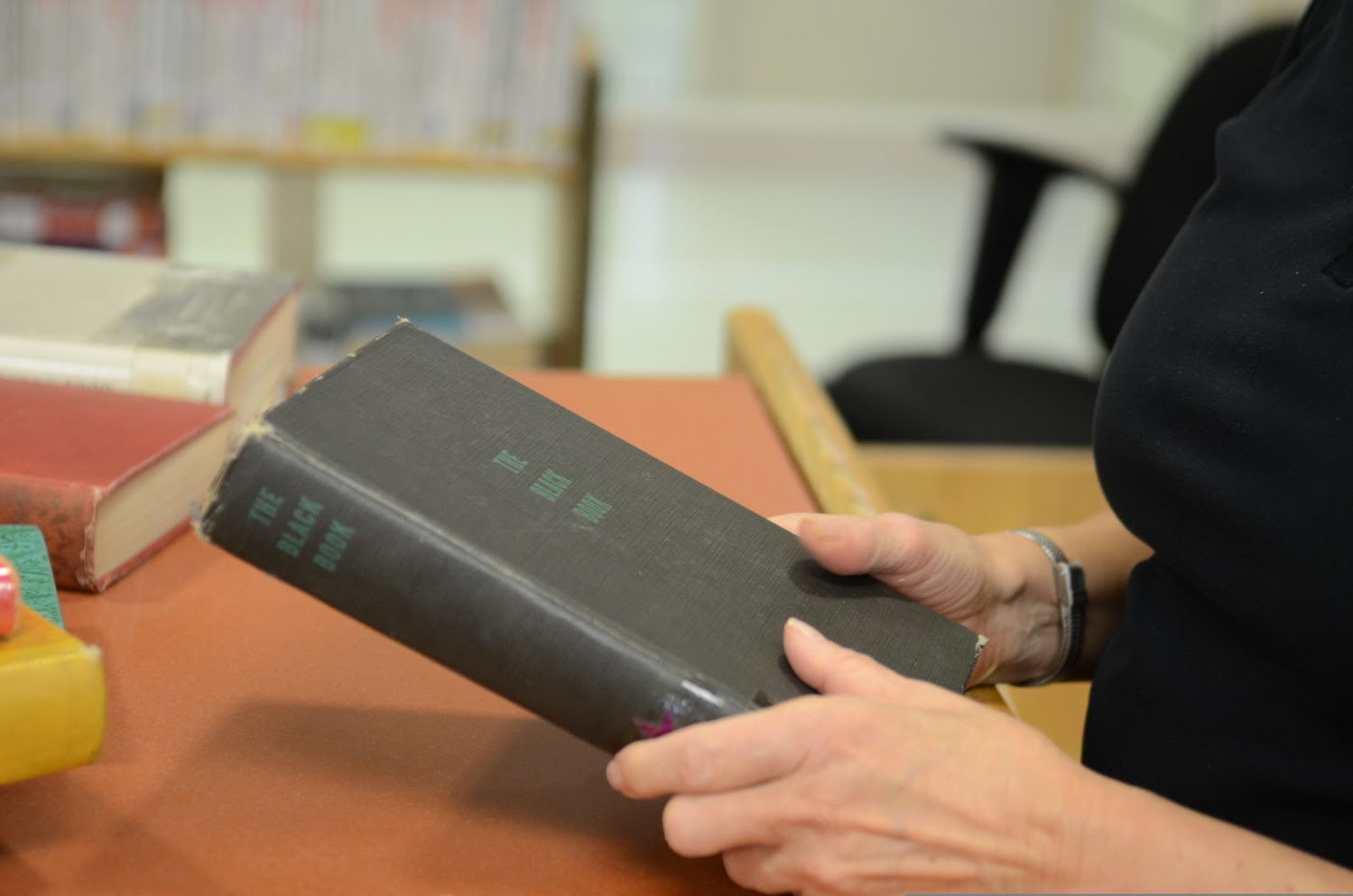
Dorothea Dwomoh is an Editor-In-Chief for ‘The Science Survey.’ Dorothea believes that journalism serves as an avenue of truth and she likes that it...
Arianna Hwang is an Editorial Editor for ‘The Science Survey.' She enjoys reading and writing articles as she believes it is important to hear the opinions...

